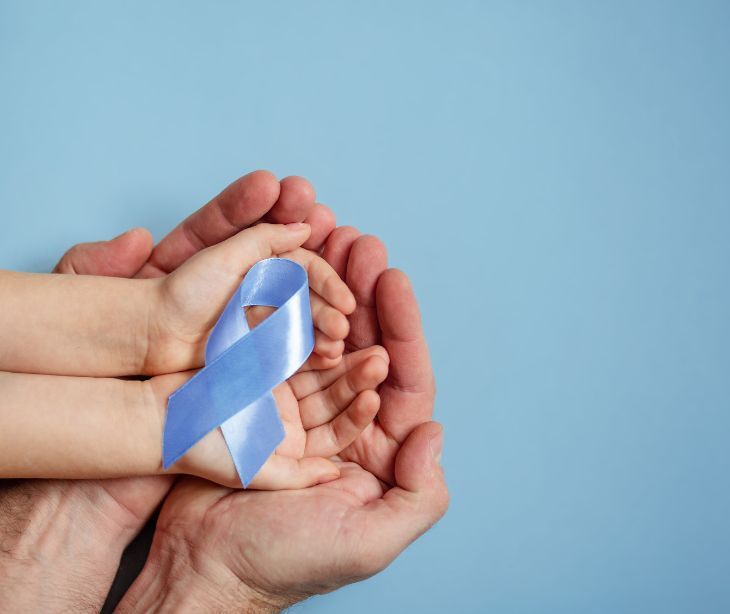
April has been designated as National Child Abuse Prevention Month (NCAPM) in the United States since 1983. It is a period for raising awareness about the importance of families and communities working together to prevent child abuse and neglect. The blue pinwheel, the national symbol for child abuse prevention, reminds us of the happy childhoods all children deserve. A healthcare provider's role extends beyond treating injuries to creating protective environments and identifying early warning signs of potential abuse.
This month provides an opportunity to reflect on collective responsibility to safeguard children and support families. The collaborative lessons we've learned across healthcare disciplines demonstrate that prevention is most effective when approached as a shared commitment among medical professionals, mental health specialists, social workers, educators, and community organizations.
Lessons from healthcare providers
From pediatric care
Pediatricians have emphasized the importance of trauma-informed care approaches when working with children who may have experienced abuse. This means understanding that certain behaviors, physical symptoms, or emotional responses may be manifestations of trauma rather than simple behavioral issues.
According to research published in Implementing a Trauma-Informed Approach in Pediatric Health Care Networks: "Pediatric health care networks serve millions of children each year. Pediatric illness and injury are among the most common potentially emotionally traumatic experiences for children and their families. In addition, millions of children who present for medical care (including well visits) have been exposed to prior traumatic events, such as violence or natural disasters... Trauma-informed care minimizes the potential for medical care to become traumatic or trigger trauma reactions, addresses distress, provides emotional support for the entire family, encourages positive coping, and provides anticipatory guidance regarding the recovery process. When used in conjunction with family-centered practices, trauma-informed approaches enhance the quality of care for patients and their families and the well-being of medical professionals and support staff."
Pediatric care has also refined screening protocols that help identify potential abuse situations without stigmatizing families. Universal screenings that assess family stressors, support systems, and parental coping mechanisms have proven effective in identifying families who might benefit from additional resources before crisis situations develop.
From emergency medicine
Emergency departments often serve as the front line in detecting cases of abuse. Emergency medicine practitioners have developed documentation protocols that preserve evidence while prioritizing compassionate care for traumatized children.
According to the article titled Child Protection Procedures in Emergency Departments: "Each year around 3.5 million children pass through emergency departments and other ambulatory care settings such as walk-in centres. Some of these children may present with non‐accidental injuries, or with non‐intentional injuries or illnesses that have nevertheless occurred within an abusive or neglectful context for the child. Emergency departments may be the first point at which such children come into contact with professionals who are able to act for their protection."
The study found that 91.3% of departments had written protocols for child protection, though the quality and implementation varied widely. The research emphasized that "For any child attending an emergency department, the first responsibility of the staff is to attend to that child's needs. Medical treatment, including treatment of injuries and administration of analgesia, should not be delayed because of concerns about possible child abuse or neglect."
Many emergency departments have implemented specialized training for all staff members on recognizing the subtle signs of abuse that might otherwise be overlooked in fast-paced emergency settings, and have established clear communication channels with child protective services that facilitate prompt reporting while ensuring appropriate follow-up care.
From mental health services
Child psychologists and psychiatrists have advanced our understanding of the long-term impacts of adverse childhood experiences (ACEs) and developed more effective therapeutic interventions for children who have experienced abuse.
Dr. Nadine Burke Harris, a renowned pediatrician, emphasizes the lasting effects of childhood adversity, "Twenty years of medical research has shown that childhood adversity literally gets under our skin, changing people in ways that can endure in their bodies for decades. It can tip a child's developmental trajectory and affect physiology. It can trigger chronic inflammation and hormonal changes that can last a lifetime. It can alter the way DNA is read and how cells replicate, and it can dramatically increase the risk for heart disease, stroke, cancer, diabetes—even Alzheimer's."
Mental health professionals have also refined approaches to supporting non-offending parents and caregivers, recognizing that strengthening the child's support system is crucial for recovery. Family therapy approaches that heal relationships damaged by trauma have shown promising results in breaking intergenerational cycles of abuse.
From social work practice
Social workers have pioneered family-centered approaches that balance child safety with family preservation whenever possible. Their work has highlighted the importance of addressing underlying factors such as poverty, substance abuse, and mental health challenges that can contribute to unsafe environments for children.
Research on family-centered services explains that, "The overarching goal of the child welfare services system is to assure the long-term well-being of children, within their families whenever possible. However, reports on the conditions of children, youths, and families show that an increasing number of families with children live with poverty, violence, racism, and substance abuse in communities that provide few resources to support them or help them solve complicated problems. Faced with these conditions, many families need a broad array of services and supports to help them negotiate the challenges of family life and care adequately for their children."
The research identifies three major groups of services: basic social services (child care, health care, income support); family support services that strengthen families and may prevent abuse; and family preservation services that offer counseling and assistance to families where maltreatment has occurred. The research further explains that "no service program can provide all that is needed to support and strengthen every family. A system of well-coordinated, accessible, family-centered services must rest on a foundation of a healthy community that affords adequate basic services and opportunities for education, housing, and employment."
Social workers have also addressed the value of cultural competence in abuse prevention work. Approaches that respect diverse family structures, cultural practices, and community values have proven more effective than one-size-fits-all interventions.
Working together across disciplines
The most notable lesson from National Child Abuse Prevention Month is that no single profession can effectively address child abuse prevention alone. Effective collaboration requires intentional structures that facilitate communication while respecting privacy regulations.
Multidisciplinary teams
Child advocacy centers across the country have demonstrated the effectiveness of multidisciplinary teams (MDTs) that bring together healthcare providers, law enforcement, child protective services, prosecutors, and mental health professionals. These teams coordinate investigations to minimize trauma to the child making sure thorough assessment of safety concerns.
In April 2025, Midland Rape Crisis and Children's Advocacy Center (MRCCAC) announced plans for a new facility designed to co-locate services with local law enforcement and child protection agencies. This initiative aims to provide support for victims and their families, reflecting the center's commitment to a multidisciplinary approach. MRCCAC has assisted over 100 therapy clients, handled 521 crisis calls, and delivered 114 community abuse prevention presentations in the past year.
Information sharing within HIPAA guidelines
Effective collaboration requires appropriate information sharing, but healthcare providers must navigate this necessity within the constraints of privacy regulations, particularly the Health Insurance Portability and Accountability Act (HIPAA).
HIPAA contains specific provisions related to child abuse reporting and investigation. The law permits healthcare providers to disclose protected health information to appropriate authorities when reporting suspected abuse or neglect as required by state law. This information can also be shared with authorized investigators, prosecutors, or other entities designated in state law to receive reports of child abuse.
Successful collaborative frameworks have implemented clear protocols for:
- Mandatory reporting: Clarifying when and how providers must report suspected abuse, with documentation procedures that maintain confidentiality while fulfilling legal obligations
- Release of information: Utilizing appropriate consent forms and processes when sharing information beyond mandatory reporting requirements
- Case conferencing: Establishing secure mechanisms for multidisciplinary case reviews that comply with privacy regulations
- Electronic records management: Implementing technological safeguards that protect sensitive information while facilitating necessary access for authorized providers
Supporting families
Preventing abuse before it occurs yields better outcomes than even the most effective intervention after the fact. Prevention strategies that have shown promise include:
Perinatal support programs
Home visiting programs like the Nurse-Family Partnership (NFP) that connect first-time, low-income mothers with registered nurses have demonstrated significant protective effects. These evidence-based programs provide regular home visits from early pregnancy until the child's second birthday, offering education about child development, modeling positive parenting strategies, and connecting families with community resources.
The NFP model, has shown some outcomes, including:
- 48% reduction in child abuse and neglect
- 79% reduction in preterm births for mothers who smoke
- 56% reduction in emergency room visits for accidents and poisonings
- 67% reduction in behavioral and intellectual problems at age 6
- 82% increase in employment for participating parents
Healthcare systems have integrated screening for factors that might indicate higher risk during pregnancy, allowing for earlier connection to supportive services. These screenings assess factors such as depression, intimate partner violence, substance use, and limited social support—all factors that can compromise parenting capacity if left unaddressed.
Parenting skills development
A study by Paul Carrol, Doctor of Philosophy at the University of California, examined the impact of positive discipline parenting workshops. The findings indicated that participation in these workshops was associated with:
- A decrease in authoritarian parenting styles, including reductions in verbal hostility and corporal punishment.
- A decrease in permissive parenting styles.
- A decrease in parental stress.
- An increase in child academic competence.
- A decrease in externalizing-hyperactive behavior in children.
These results suggest that Positive Discipline programs can lead to healthier parent-child interactions and improved child outcomes.
Addressing caregiver stress and mental health
Embedding mental health professionals within primary care settings has proven effective in improving access to services for struggling parents. A systematic review identified components of successful pediatric integrated mental health care models, including:
- Population-based care
- Measurement-based care
- Delivery of evidence-based mental health services
These components were present in studies reporting clinical improvements in mental health symptoms. Additional elements like treatment-to-target and team-based care were associated with specific positive outcomes, such as enhanced functional impairment and patient satisfaction.
Protective factors and ACEs
According to the Child Welfare Information Gateway, "Knowledge and understanding of protective factors and adverse childhood experiences (ACEs), as well as the social-ecological model, can inform efforts to reduce the risk of maltreatment and prevent the recurrence of abuse or neglect by drawing on family strengths and acknowledging the impact of traumatic events."
Protective factors
Protective factors are conditions or attributes that, when present in families and communities, increase the well-being of children and families and reduce the likelihood of maltreatment. The Child Welfare Information Gateway identifies six protective factors that healthcare providers should assess and strengthen:
- Nurturing and attachment - Strong emotional bonds between parents and children that provide a foundation for healthy development
- Knowledge of parenting and child and youth development - Understanding age-appropriate expectations and milestones
- Parental resilience - The ability to manage stress and function well even when challenged
- Social connections - Networks of support that provide emotional backing and practical assistance
- Concrete supports for parents - Access to essential services addressing basic needs
- Social and emotional competence of children - Children's ability to interact positively with others, self-regulate, and communicate effectively
Adverse childhood experiences (ACEs)
The ACEs study in the 1990s identified a relationship between potentially traumatic childhood events and negative health outcomes in adulthood. As the Child Welfare Information Gateway notes, ACEs can include:
- All types of abuse and neglect
- Parental substance use or mental illness
- Parental incarceration
- Domestic violence
- Divorce
Moving forward
As National Child Abuse Prevention Month concludes, healthcare providers emphasize that the work of prevention continues year-round. Approaches include:
Integration into standard care
Rather than treating child abuse prevention as a separate initiative, healthcare organizations should intergrate screening, education, and support into standard care protocols. This normalization reduces stigma and ensures consistent attention to prevention.
Ongoing professional development
Healthcare providers across disciplines should commit to continuous learning about trauma-informed approaches, cultural humility in family engagement, and evolving best practices in child protection.
Advocacy for supportive policies
Healthcare providers should recognize their role as advocates for policies that support families and protect children. From adequate funding for prevention programs to paid family leave policies that reduce parental stress, systemic changes complement direct services.
FAQs
What are the legal obligations of teachers in reporting child abuse?
Teachers are mandated reporters and must report any reasonable suspicion of child abuse to child protection authorities, following state-specific guidelines.
How can neighbors or community members help prevent child abuse?
Community members can support at-risk families by offering help, staying alert to signs of neglect or abuse, and reporting concerns to child welfare agencies.
What role do religious or faith-based organizations play in child abuse prevention?
Faith-based organizations can provide support networks, promote awareness, and offer counseling or family services in collaboration with professionals.
Can abuse prevention programs be adapted for children with disabilities?
Yes, child abuse prevention programs should be tailored to include accessible communication and safety strategies for children with disabilities.
How can technology be used to support child abuse prevention?
Digital tools like telehealth, data tracking systems, and online parenting resources can help identify risk factors and extend access to support.
Subscribe to Paubox Weekly
Every Friday we'll bring you the most important news from Paubox. Our aim is to make you smarter, faster.




